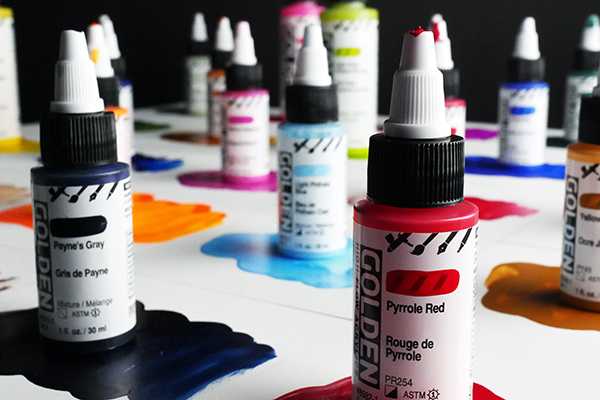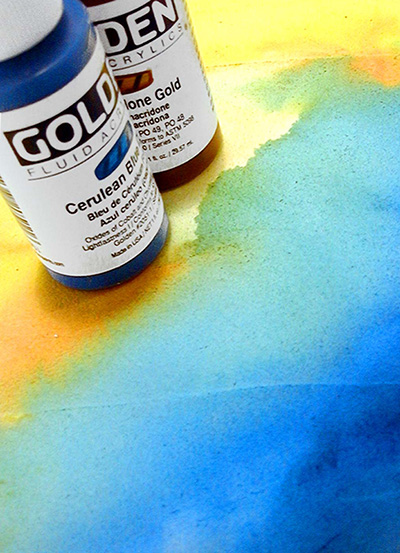|
Watercolor effects with Acrylics
The binder is the primary difference between watercolor and acrylic paints. Gum Arabic, the binder for watercolors, is a resoluble binder that allows the artist to lift out or rewet the paint. Acrylic paint uses a polymer emulsion binder that is not resoluble when dry. Both watercolor and acrylic have unique qualities, but there are some very interesting advantages for artists who want to explore the acrylic medium in a watercolorist fashion. Most artists have experimented with tube acrylics thinned with large quantities of water to formulate a watercolor consistency, usually with disappointing results. Most acrylic paints are formulated to a heavy thick consistency designed to hold brush strokes with drag or resistance to the paintbrush or palette knife strokes. Acrylics were not originally formulated to dilute to thin watercolor consistencies. When adding water to tube acrylics they tend to resist being diluted, wanting to retain their consistency. The amount of water it does take to thin the acrylic to the consistency of watercolors causes a tremendous loss of pigment strength affecting the vibrancy of the color. To counteract this effect, try using GOLDEN Fluid Acrylics. A very common misconception is that low viscosity paints are just tube color with lots of water added. Not so. GOLDEN Fluids are formulated quite differently with a low viscosity or consistency, but with rich highly concentrated pigment loads equal to the traditional tube color. Because they are already thin to begin with, they need very little water to use in a watercolor wash. Here are some advantages to GOLDEN Fluid Acrylics: Pigments are the Same Multiple Washes That Won't Muddy Save Framing Costs More Options of Surfaces to Paint On More Intense Color Thicker Application of Paint Can Apply Protective Varnishes How to Use the Acrylic GOLDEN does not add matting agents so the colors are closer to the expectations of traditional watercolorists. Notes:
|
Watercolor effects with Acrylics
Link to Related Products
You Might Also Like

Try our NEW acrylic paint mixer
Our newly enhanced mixer allows acrylic and oil artists to create personal palettes so you can mix with the paints in your studio, plus instant comple...

Mixing Phosphorescent Green with Fluorescent Colors
Luminescent colorants are combined with other products, and the best display for optimal presentation.

GOLDEN and Williamsburg Virtual Paint Mixer
Explore some features of the GOLDEN Acrylic and Williamsburg Oil MXR!

High Flow Acrylic Colors
A free-flowing acrylic paint line for use with drawing tools, airbrush and spraying, and pen & ink applications. The thin consistency allows for both ...

